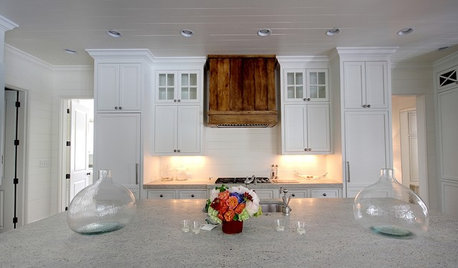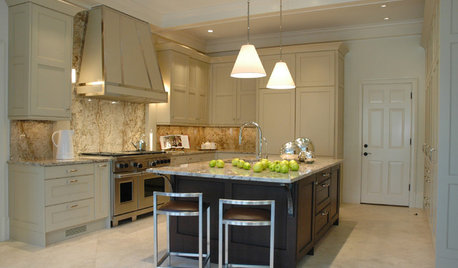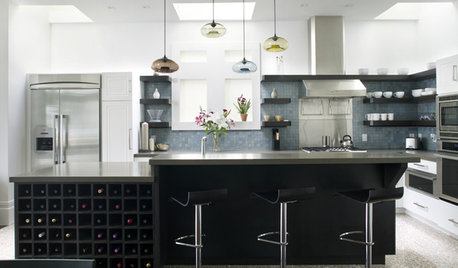hood for induction range
elyash
12 years ago
Related Stories

5 Stunning Modern Range Hoods
Today's kitchen range hoods can look like sleek sculptures. Here's what to look for when you go shopping for one
Full Story
KITCHEN DESIGNWood Range Hoods Naturally Fit Kitchen Style
Bring warmth and beauty into the heart of your home with a range hood crafted from nature's bounty
Full Story
KITCHEN APPLIANCESWhat to Consider When Adding a Range Hood
Get to know the types, styles and why you may want to skip a hood altogether
Full Story
KITCHEN DESIGNHow to Find the Right Range for Your Kitchen
Range style is mostly a matter of personal taste. This full course of possibilities can help you find the right appliance to match yours
Full Story
HOUSEKEEPINGHow to Clean Your Range and Oven
Experts serve up advice on caring for these kitchen appliances, which work extra hard during the holidays
Full Story
KITCHEN APPLIANCESThe Many Ways to Get Creative With Kitchen Hoods
Distinctive hood designs — in reclaimed barn wood, zinc, copper and more — are transforming the look of kitchens
Full Story
KITCHEN DESIGNHow to Choose the Right Hood Fan for Your Kitchen
Keep your kitchen clean and your home's air fresh by understanding all the options for ventilating via a hood fan
Full Story
KITCHEN DESIGNWhat to Know When Choosing a Range Hood
Find out the types of kitchen range hoods available and the options for customized units
Full Story
KITCHEN DESIGN8 Industrial-Luxe Kitchen Hood Styles
Make a Statement with Show-Stopping Metal Range Hoods
Full Story








a2gemini
chac_mool
Related Professionals
Amherst Kitchen & Bathroom Designers · College Park Kitchen & Bathroom Designers · Henderson Kitchen & Bathroom Designers · Martinsburg Kitchen & Bathroom Designers · Ridgefield Kitchen & Bathroom Designers · Williamstown Kitchen & Bathroom Designers · Sunrise Manor Kitchen & Bathroom Remodelers · Bellevue Kitchen & Bathroom Remodelers · Bremerton Kitchen & Bathroom Remodelers · Glen Carbon Kitchen & Bathroom Remodelers · Tulsa Kitchen & Bathroom Remodelers · Langley Park Cabinets & Cabinetry · West Freehold Cabinets & Cabinetry · Milford Mill Cabinets & Cabinetry · Tabernacle Cabinets & CabinetryelyashOriginal Author
chac_mool
attofarad
amcook
cj47
chac_mool
stir_fryi SE Mich
attofarad
elyashOriginal Author
chac_mool
elyashOriginal Author